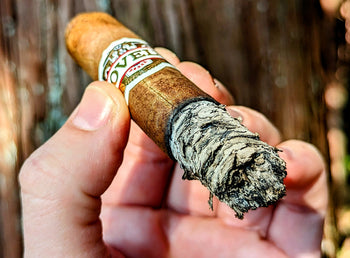Although the vast array of cigar tobacco strains may seem staggering, there are only a select few spots on the globe where the stuff is grown.
Tobacco is a notoriously finicky cash crop, and a damn expensive one at that. So having the right conditions in place is vital to a farm's success.
Tobacco in the Tropics
Whereas the majority of all premium long-filler cigar tobacco is cultivated in the tropical regions of Central America and across various islands within the Caribbean Sea, there are other growing regions where cigar tobacco flourishes. But we'll get to all that jazz here in a few...
After the mass exodus that occurred in Cuba during the 1960s, the fertile, volcanic soils of Central and South America began to play host to more and more cigar crops decade after decade. Farmers and cigar manufacturers were setting up shop in countries that were conveniently located right outside of Cuba, and where Spanish remained the natively spoken language.
This was not just due to the quality of the loam underfoot, but because of the long growing seasons associated with living near the equator. Therefore, a large amount of cigar tobacco comes from the countries of Honduras, Nicaragua, Dominican Republic, Ecuador, Brazil, Jamaica, Costa Rica, and even countries like Peru.
Growing Stogie Leaf in North America
But being that certain strains of tobacco can cope with climates that stray from the tropical norm, many premium cigar blends come stuffed, bound, and wrapped with crops hailing from a select few areas outside of those listed above.
Take Connecticut for instance, where shade-grown milder cigar wrappers sit beside coarse, Broadleaf sun-grown varietals. Save for its frigid winters and shorter growing season, the basin of the Connecticut River Valley makes for a climate that is damn near ideal for cigar tobacco. For more on this unique growing region, be sure to read a little write-up I did a while back entitled "The Connecticut Disconnect: Misunderstanding America's Favorite Homegrown Cigar Leaf."
Then you've got Pennsylvania, Virginia, and Kentucky. Three states produce very little cigar tobacco, but enough to make note of in a synopsis due to the unique attributes they impart on a premium cigar blend.
Up next is Florida. Where a tiny portion of cigar tobacco is grown nowadays compared to what was once considered a prime cash crop. But as the 20 Acre Farm cigar from Drew Estate clearly illustrates, Florida tobacco is back, and there's still some really good stuff coming from that region of the United States.
Finally, there is Mexico. A country with a region called San Andres, where some of the finest maduro leaf tobacco is cultivated. However, outside of this area, not much cigar tobacco is produced, thus making Mexico primarily a maduro leaf supplier.
Cigar Contents From Everywhere Else
Hop across the pond, and you'll find that the vast majority of premium cigar ingredients come from either the African country of Cameroon, or Indonesia.
While the prior of these two makes some mighty tasty wrapper leaf, which is as smooth and nutty as it comes, the latter produces the iconic Sumatran tobacco strain. A coarser, robust-tasting tobacco, that can be utilized as a wrapper, binder, or filler.

